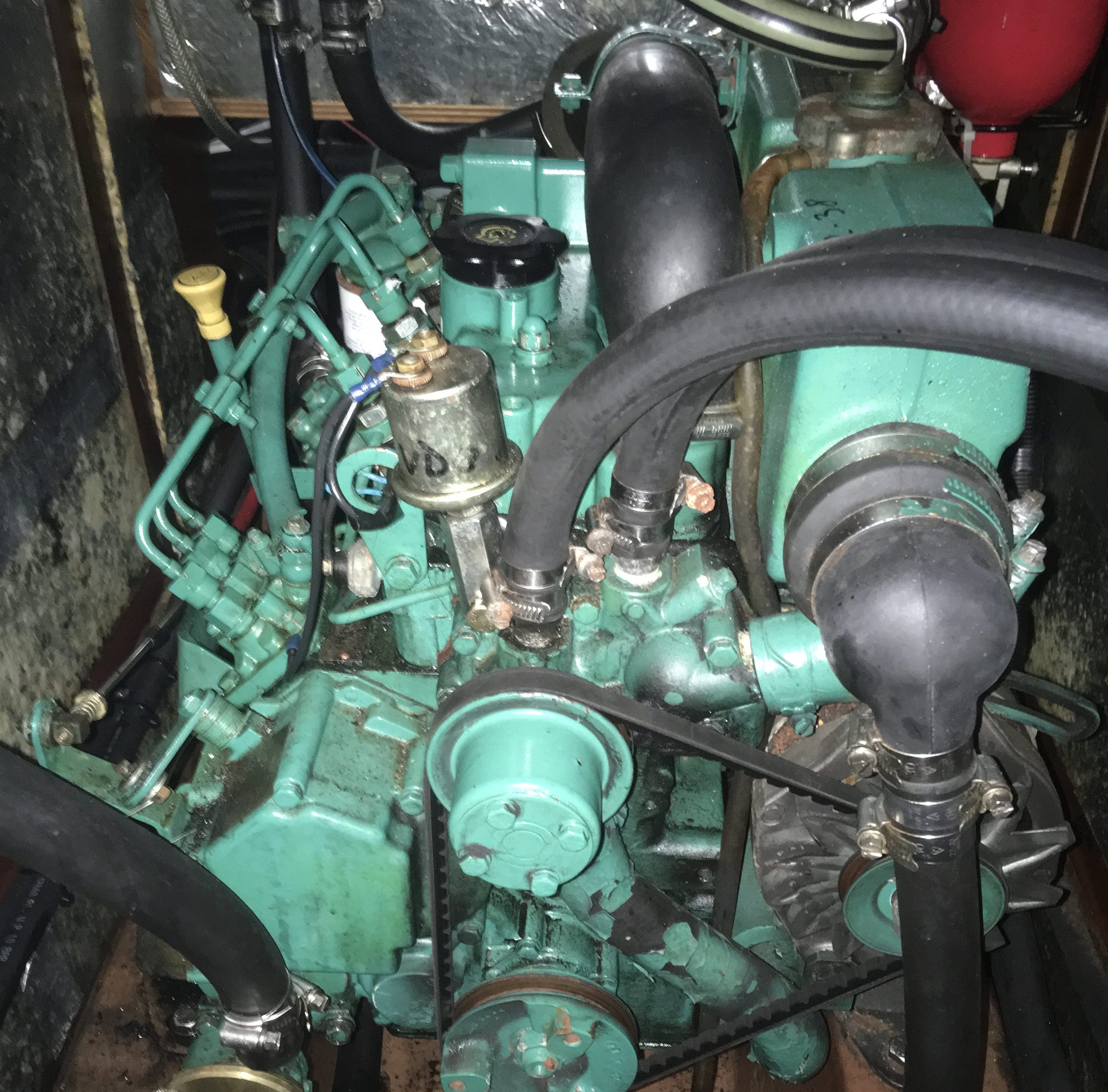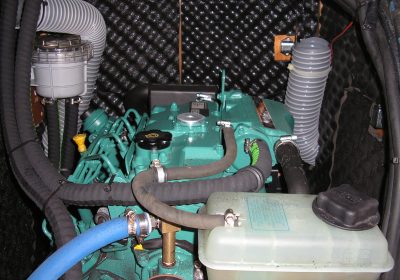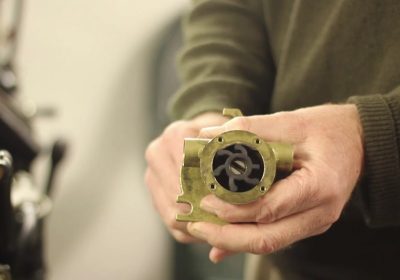This article originally appeared in Sailing Today magazine as Blue Water Diesels – an article about preparing a boat and her crew for long distance cruising…
Man has long been inclined to head off over the horizon and explore. The motivation and the risks have changed over time – today it is about adventure and fulfilment rather than empire building and wealth creation – and your crew probably won’t get scurvy and teredo navalis isn’t going to compromise your yacht.
Technology has mitigated many of the challenges faced by mariners of old and has made passage making easier and safer than ever before. We take for granted pin-point navigational accuracy, autopilots and the ubiquitous diesel engine along with the domestic niceties of modern day yachting like fridges, water makers etc. Life on the high seas has never been so good or so easy but the bells and whistles come at a price, that price is complexity.
To master the sophisticated modern yacht you have to know it. The great aviator Chuck Yeager, the first man to break the sound barrier, attributed his survival of both combat and test flying to his in-depth understanding of his aircraft’s systems. He spent time getting to know the aeroplane intimately so that when the unexpected presented itself he knew what to do – no thinking time required. When your yacht goes wrong you will have more time to ponder your situation than Yeager ever did, but the same principles apply, you have to know your craft.
The extent to which you prepare yourself and your vessel for long distance cruising depends on where you are going and for how long. If undertaking modest coastal cruising in areas with good marine infrastructure then the basic skills might be enough – at a pinch. If however you are venturing further abroad then proper consideration must be given to the boat’s preparation, spare parts and tools – and equally important, to her crew’s ability to attend to issues as they arise. The best way to get to know your vessel intimately is to take her apart and service and inspect the systems before departure. You need to have been in there to know what to expect, to have bought the right tools and the right spare parts. It’s all part of preparing a yacht and her skipper.
As a Minimum – Basic Issues & Basic Skills
A yacht’s greatest vulnerabilities are its engine’s fuel and raw water systems, if they fail, sooner or later the engine will stop. If you also have a diesel generator it has the same systems and needs the same love. As a bare minimum you should have the spares, tools and skills to replace fuel filters and bleed the system, and to change the raw water impeller. Not difficult to learn and an absolutely essential basic competence no matter how locally you are cruising.
To make life easier you could identify the fuel bleeds on the engine and filters and paint them red (red = blood – geddit?). Perhaps put a dab of paint on the correct spanners too so you pick up the right one first time, because sometimes seconds count – it doesn’t have to be a lee shore in a gale – I once had the engine stop on a blustery day manouvering in Brighton marina – oh lord…. While on the theme of colour coding bits of your engine you could, while such things are at the forefront of your mind mark the raw and fresh water cooling system hoses with cable ties, you may have travelled half a world away before something lets go in the middle of the night.
Beyond the Horizon – Beyond the Basics
If you are going further for longer what are the considerations? Just how much money and space you dedicate to spares depends on where you are going and for how long. For example engine exhaust water injection elbows corrode away over time. If you are setting off for a year with a brand-new engine you don’t need to take one. If your engine is aged and your long distance cruising plans open-ended then you probably should.
Refuelling – keep the tank as full as possible as much as possible to reduce condensation. Diesel bug lives in the water and feeds on the diesel: no water = no bug. A water-separator type fuel funnel is great for removing water and debris when refuelling. Water and bug can be removed from the diesel tank with a vacuum type oil extractor, a tool you can’t live without – useful for removing just about any liquid from any where. Do you know how to access the top of the tank?
Engine raw water cooling circuit. Take plenty of spare impellers and keep the used ones just in case, I have half a dozen or more in the chart table. Use margarine to lubricate it when fitting if you don’t have one of those neat little sachets of glycerine. Do you need a puller to remove the old one? Most impellers are accessible enough to be popped out with two screwdrivers but some are very challenging. When re-fitting impellers contrary to popular myth it doesn’t matter which way the vanes are lying when you fit it, just get it in there. Perhaps think about buying a Speedseal – terrific piece of kit, I have one on my boat – no paper gasket and no tiny screws to lose. You might like to consider taking a set of raw water pump bearings and seals or better still a complete new pump – it’s easier to swap the entire pump than fit new bearings to an old one.
Consider removing the heat exchanger core to inspect it for corrosion and clogging, even the fresh water (engine water) side gets clogged up eventually. Proprietary solutions are available to clean heat exchangers but elbow grease and gumption will do it too. Take a set of gaskets, seals and ‘o’ rings as appropriate to re-fit the heat exchanger core away from home. A spare core too if you’re feeling flush. Remember the generator if you have one – it has the same systems.
The engine fresh water cooling circuit – make sure the antifreeze is fresh even when sailing in latitudes where the butter melts – antifreeze also prevents corrosion but the effect diminishes over time. Change it every two years and, unless the engine manufacturer recommends otherwise use the ‘old style’ silicate antifreeze not the modern long-life organic acid stuff that isn’t so compatible with our brass/bronze and solder heat exchangers. Read more about antifreeze afloat here.
Engine electrics. A spare alternator will never be a waste of space. Check to see if it has a pulley fitted? They often don’t so have one fitted before you depart. Removing the pulley from the faulty alternator won’t happen without a puller. Consider taking a spare starter motor, you may never need it but if yours stops working you are stuck with no propulsion and no engine generated electricity. Solar panels and wind generators are fine but won’t ever do what an engine driven alternator does. Consider the battery charging system and see if you can come up with a work-around to get power from your alternator to the ships batteries if the intelligent charge management system manages to outwit itself far from home.
Engine belts. If the belts are wearing prematurely and you are getting black dust in the engine box then you are probably asking too much of them. Perhaps you upgraded the charging system to a bigger alternator but didn’t upgrade the belts that drive it? Talk to the engine people about upgrading.
Take spare engine and gearbox control cables. Fit the new ones alongside the existing ones where they run through the boat so they are already in place and just need hooking up.
Hopefully in the process of getting to know your vessel you have acquired a comprehensive tool kit – you will never, ever, own too many tools.
Below is a suggested, basic list of tools – you will inevitably buy more over time.
Spanners (2 of each size), metric or imperial – probably both? Socket sets ¼, 3/8 and ½ inch drive plus torque wrenches to suit. Have you ever wondered why it’s sometimes difficult to find a spanner to fit battery terminals? Looks like 1/2″ or 13mm? – nope – probably Whitworth – don’t ask me…
Screw drivers – Posi, Torx, flat bladed – can you remove sole boards quickly if holed below the waterline?
Electrical test meter, fuses, maybe wire (tinned copper not nasty auto stuff).
Oil extractor, the vacuum type are superb but remember to warm up the engine before attempting to suck out the oil or it takes forever Carry a couple of empty oil cans for the waste oil.
Have a small ‘emergency’ tool box kept close at hand with just the tools and spares (filters and impellers essentially) needed to perform the basic fuel and raw water pump tasks and keep it accessible. You could usefully add a head torch and some gloves too, you need the nitrile ones that don’t melt on contact with diesel, agricultural merchants are good for this sort of thing.
Once you have a handle on the oily rag stuff you can relax and enjoy your cruise.
Spare parts – OEM or ‘pattern’?
There is a global trade in ‘non-genuine’ or ‘pattern’ or ‘knock-off’ parts; that is components which are not made by the ‘Original Equipment Manufacturer’ (OEM) but by a third party. When sourcing less-expensive parts you will inevitably be told that they really are OEM, that they ‘probably’ came from the same factory as the OEM parts and that ‘everybody uses them with no issues’ – little of which is very likely to be true…
However financially painful it may be, it will always be best to purchase branded OEM parts, which is easy to say but not always realistic. Sometimes manufacturers’ prices are eye-wateringly steep or the genuine parts unavailable. Which spares to buy is a difficult judgement call. The only smart approach is to become as fully informed as possible, internet forums are an absolute boon here.
Equipment maintenance manuals – should come with the boat but if not are sometimes available online. However beware dodgy websites, you might download a whole lot more than you intended….
If you prepare properly by engaging fully with your boats various systems you will demystify and clarify your understanding your boat and its equipment which will leave you well placed to copw with much of what comes your way. Even if ultimately you contract repairs and maintenance to a third party you will at least be in a position to manage the work and protect your interests.



